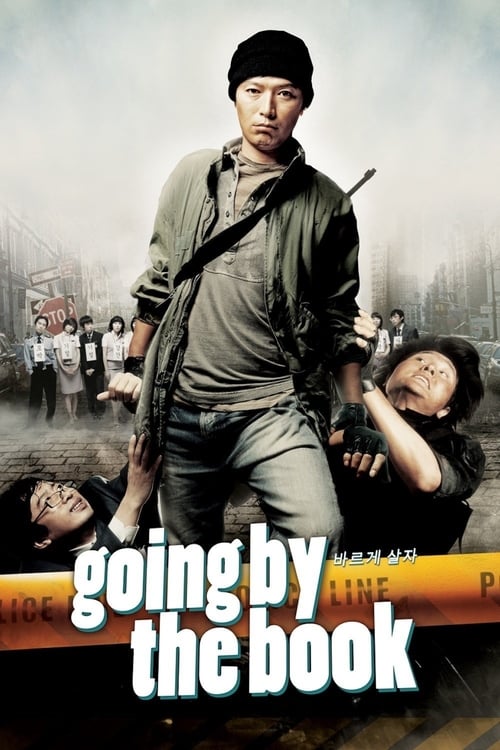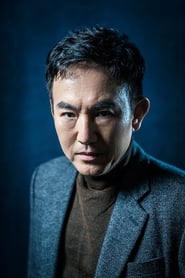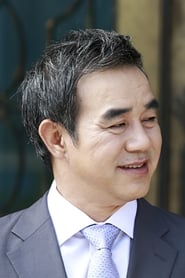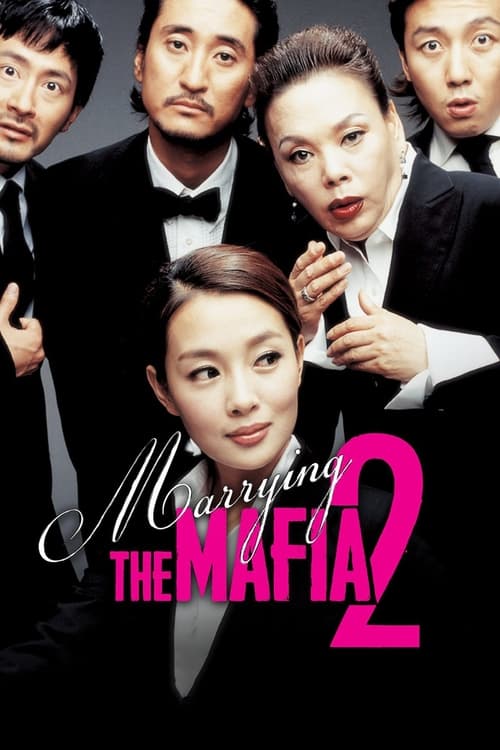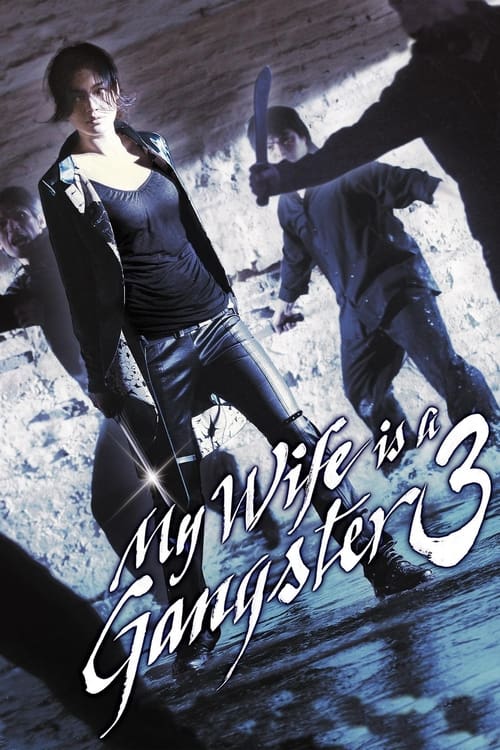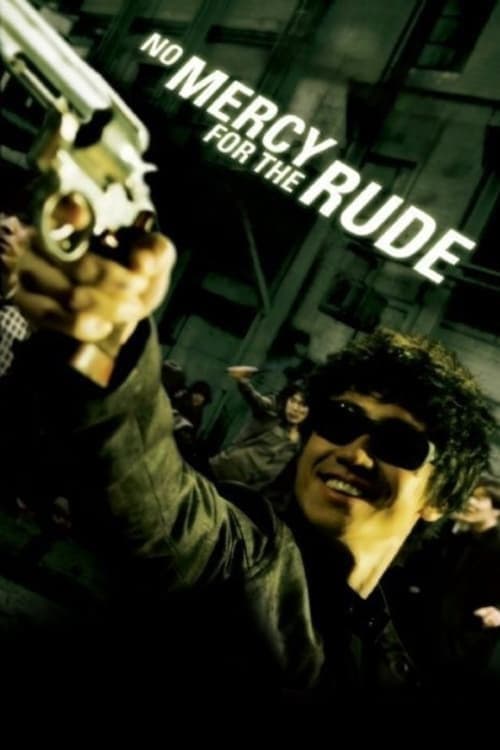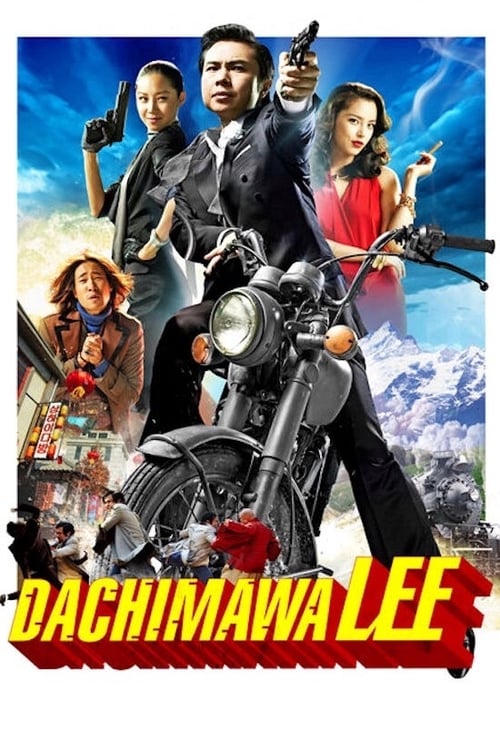
Ask Your Own Question
What is the plot?
The sun rises over the sleepy town of Sampo, its quiet streets lined with modest shops and the occasional police car. The air is thick with the tension of recent events--a string of bank robberies has shaken the community, and the townspeople look to the police for answers. At the local traffic post, Jung Do-man, a low-ranking traffic warden, stands with his clipboard, his face set in the stern expression of a man who lives by the book. He is meticulous, unyielding, and utterly committed to the rules, even when they inconvenience others.
Do-man's day begins like any other. He patrols the streets, issuing tickets for minor infractions, his presence a constant reminder that order must be maintained. As he stands at his post, a sleek black sedan pulls up, its driver clearly in a hurry. Do-man steps forward, clipboard in hand, and signals for the driver to stop. The man behind the wheel is Lee Seung-woo, the newly appointed police chief, a man with a reputation for ambition and a desire to restore public trust in the force. Do-man approaches the window, his voice calm but firm.
"Sir," he says.
"Yes?" Lee replies, a hint of impatience in his tone.
"I still need to see your license," Do-man insists, holding out his hand.
Lee hesitates, then hands over his license. Do-man checks it carefully, then issues a ticket for speeding. Lee's eyes narrow, but he says nothing. He drives off, his mind already turning to the challenges ahead. Do-man watches him go, unaware that this small act of duty will set in motion a chain of events that will change everything.
At the police station, Lee Seung-woo gathers his officers. The town is on edge, and the recent bank robberies have eroded public confidence. Lee knows he must act quickly to restore order. He proposes a bold plan: a simulated bank robbery drill, designed to demonstrate the police's effectiveness and reassure the townspeople. The drill will be realistic, with one officer playing the role of the robber, and the rest responding as if it were a real crisis. Lee believes this will not only boost morale but also show the public that the police are in control.
The officers are skeptical, but Lee is determined. He needs someone to play the robber, someone who will take the role seriously. His eyes fall on Jung Do-man. Do-man's reputation for strict adherence to rules makes him the perfect candidate. Lee approaches him after the meeting.
"Do-man," he says, "I need you to play the robber in the drill."
Do-man looks up, his expression unreadable. "I'm a traffic warden, sir. I don't know if I'm the right person for this."
"You're the right person," Lee insists. "I need someone who will follow the rules, who will do everything by the book. That's you."
Do-man hesitates, then nods. "If you say so, sir."
The day of the drill arrives. The local bank is transformed into a stage for the simulation. The officers are briefed, their roles assigned. Do-man is given a rifle and a set of instructions. He is to enter the bank, take hostages, and simulate a robbery. The drill is to be as realistic as possible, but everyone knows it's just a training exercise.
Do-man enters the bank, his rifle in hand. The hostages--played by volunteers--are gathered in the center of the room. Do-man's face is serious, his movements precise. He begins to issue commands, his voice calm but authoritative. The hostages comply, their fear genuine, but Do-man remains focused on his task.
As the drill progresses, Do-man's commitment to the role becomes apparent. He doesn't just play the part; he lives it. When a hostage resists, Do-man points his rifle and yells, "BANG!" The hostage falls to the floor, and Do-man places a sign labeled "dead" on their chest. The other hostages watch in horror, but Do-man is unfazed. He continues to manage the situation, labeling more hostages as "dead" or "raped" with signs, his actions methodical and unemotional.
At the police station, Lee Seung-woo monitors the drill from a command center. He expects a controlled, predictable event, but Do-man's actions are anything but. The situation escalates quickly, the hostages' reactions becoming more intense, the tension mounting. Lee's frustration grows as he realizes that Do-man is taking the drill too seriously.
"Do-man, this is just a simulation," Lee says over the radio. "You don't need to go this far."
Do-man's voice is calm. "I'm just following the rules, sir. This is how a real robber would act."
Lee's jaw tightens. He knows he's lost control of the situation, but he can't stop the drill without undermining its purpose. The media, drawn by the commotion, begins to arrive. Reporters set up cameras outside the bank, their lenses capturing the unfolding drama. The townspeople gather, their fear palpable. The drill, meant to reassure, has become a source of panic.
Inside the bank, Do-man continues to manage the hostages. He uses the rifle to simulate shootings, placing signs on the "dead" hostages. The volunteers, caught up in the realism, begin to act as if the situation is real. One hostage, a mouthy man, tries to resist, but Do-man simply points his rifle and yells, "BANG!" The man falls, and Do-man places a sign on him. The other hostages watch in silence, their fear genuine.
Lee Seung-woo's frustration turns to embarrassment. The media coverage is not what he envisioned. The images of hostages labeled "dead" and "raped" are broadcast across the country, the public unaware that it's just a drill. The national media picks up the story, and the crisis spirals out of control.
At the police station, Lee tries to regain control. He contacts Do-man, urging him to end the drill. "Do-man, this is getting out of hand. You need to stop."
Do-man's voice is calm. "I'm just doing my job, sir. I'm following the rules."
Lee's frustration is palpable. He knows he can't stop the drill without admitting failure, but he can't let it continue without risking public panic. The situation becomes a national spectacle, the police force's reputation hanging in the balance.
Meanwhile, Do-man's mother is called to the bank. The police hope she can persuade her son to release the hostages. She arrives, her face filled with concern. She speaks to Do-man through the bank's intercom.
"Do-man, it's me. Please let the hostages go."
Do-man's voice is calm. "I'm just doing my job, Mom. I'm following the rules."
His mother is confused. She doesn't understand the seriousness of the drill, but she pleads with him. "Do-man, I need your seal for tomorrow. Please come home."
Do-man hesitates, then says, "I'll be home soon, Mom. I just need to finish my job."
The situation continues to escalate. The hostages, caught up in the realism, begin to act as if the situation is real. One hostage, a woman, tries to resist, but Do-man simply points his rifle and yells, "BANG!" She falls, and Do-man places a sign on her. The other hostages watch in silence, their fear genuine.
Lee Seung-woo's frustration turns to desperation. He contacts Do-man again, urging him to end the drill. "Do-man, this is getting out of hand. You need to stop."
Do-man's voice is calm. "I'm just doing my job, sir. I'm following the rules."
Lee's frustration is palpable. He knows he can't stop the drill without admitting failure, but he can't let it continue without risking public panic. The situation becomes a national spectacle, the police force's reputation hanging in the balance.
Finally, after hours of tension, Do-man completes the drill. He releases the hostages, his actions methodical and unemotional. The police officers, exhausted and embarrassed, gather the hostages and escort them out of the bank. The media, still unaware that it's just a drill, continues to broadcast the images of the hostages labeled "dead" and "raped."
At the police station, Lee Seung-woo confronts Do-man. "Do-man, you went too far. This was just a drill."
Do-man's voice is calm. "I was just following the rules, sir. I did my job."
Lee's frustration is palpable, but he knows he can't fault Do-man for his commitment to duty. The situation, though embarrassing, has shown the police force's dedication to order and discipline.
The film ends on a comedic note, with Do-man returning to his duties as a traffic warden. The townspeople, still unaware of the true nature of the drill, look to the police with renewed respect. Do-man's unwavering commitment to the rules, though it caused chaos, has ultimately restored order and trust in the community.
As the sun sets over Sampo, Do-man stands at his post, clipboard in hand, ready to issue another ticket. The town is quiet once more, the crisis averted, the rules upheld.
What is the ending?
In the ending of "Going by the Book," the main character, a police officer named Lee, successfully resolves the hostage situation at the bank. He manages to defuse the tension and bring the situation to a peaceful conclusion. The film concludes with Lee reflecting on the events and the impact they had on his life and the lives of those around him.
As the climax of "Going by the Book" unfolds, we find ourselves in the tense atmosphere of the bank where the hostage situation has reached its peak. Officer Lee, portrayed with a mix of determination and vulnerability, stands outside the bank, strategizing how to handle the crisis. The camera captures the anxious faces of the hostages inside, their fear palpable as they await the outcome of this standoff.
Lee's internal conflict is evident as he grapples with the weight of responsibility. He is not just a police officer; he is a man who has been deeply affected by the events leading up to this moment. His motivation to resolve the situation peacefully stems from a desire to protect the innocent and to redeem himself from past mistakes. As he communicates with the bank robber, who is revealed to be a desperate man with a tragic backstory, Lee's empathy shines through. He listens intently, trying to understand the robber's motivations while also maintaining control of the situation.
The tension escalates as the robber becomes increasingly agitated, threatening the hostages. Lee, however, remains calm, using his training and instincts to de-escalate the situation. He employs a series of negotiation tactics, speaking softly and reassuringly, which helps to ease the robber's anger. The cinematography captures the intensity of the moment, with close-ups of Lee's face showing his determination and the robber's conflicted emotions.
As the standoff continues, the hostages begin to bond with the robber, humanizing him in the eyes of both Lee and the audience. This connection becomes a pivotal moment, as it allows Lee to shift his approach. He realizes that the key to resolving the situation lies in understanding the robber's plight rather than simply enforcing the law. The film's narrative emphasizes the importance of compassion and communication in moments of crisis.
In a climactic moment, Lee manages to convince the robber to release the hostages, promising that he will not face harsh punishment if he surrenders peacefully. The robber, torn between his desperation and the humanity shown to him, ultimately decides to let the hostages go. The tension in the room dissipates as the hostages are freed, and the robber surrenders to Lee.
As the dust settles, we see Lee reflecting on the events that transpired. The film closes with him contemplating the impact of the day on his life and the lives of those involved. The final scenes show Lee returning to his normal life, but he is forever changed by the experience. The audience is left with a sense of hope, as Lee's actions demonstrate the power of understanding and the potential for redemption, not just for the robber but for himself as well.
In summary, the fates of the main characters are intertwined in this resolution. Officer Lee emerges as a more empathetic and understanding individual, having learned valuable lessons about human connection. The robber, while facing the consequences of his actions, is given a chance at redemption through the compassion shown to him. The hostages, having experienced fear and uncertainty, are ultimately freed and return to their lives, forever marked by the experience but grateful for their safety. The film concludes on a note of reflection, emphasizing the complexities of human nature and the importance of compassion in overcoming conflict.
Is there a post-credit scene?
In the movie "Going by the Book," there is no post-credit scene. The film concludes without any additional scenes or content after the credits roll. The story wraps up with the resolution of the main plot, focusing on the character of a police officer who takes a unique approach to enforcing the law, leading to a series of comedic and heartfelt moments. The ending emphasizes the themes of justice and the absurdity of bureaucracy, leaving the audience with a sense of closure regarding the characters and their journeys.
What motivates the main character, Officer Park, to strictly enforce the law in the film?
Officer Park is driven by a deep sense of duty and a desire for justice. He believes that following the law to the letter is essential for maintaining order in society. His strict adherence to regulations stems from a personal tragedy that he experienced, which fuels his commitment to ensuring that no one else suffers due to negligence or lawlessness.
How does the character of the bank manager, Mr. Kim, react to the robbery in the film?
Mr. Kim initially reacts with panic and disbelief when the robbery occurs. He is portrayed as a somewhat bumbling character, struggling to maintain control over the situation. As the events unfold, he becomes increasingly frustrated with the police's handling of the case, particularly with Officer Park's rigid approach, which he feels complicates matters further.
What role does the character of the elderly woman play in the story?
The elderly woman serves as a pivotal character who represents the community's perspective on the law. She is a witness to the robbery and her interactions with Officer Park highlight the emotional toll that crime takes on ordinary citizens. Her insights and experiences provide a contrast to the rigid enforcement of the law, showcasing the human side of the narrative.
How does the film depict the relationship between Officer Park and his superiors?
Officer Park's relationship with his superiors is tense and fraught with conflict. His unwavering commitment to the law often puts him at odds with his boss, who is more concerned with public relations and the image of the police force. This dynamic creates a sense of isolation for Park, as he feels misunderstood and unsupported in his quest for justice.
What is the significance of the training montage featuring Officer Park?
The training montage is significant as it showcases Officer Park's dedication and determination to uphold the law. It highlights his rigorous preparation and the lengths he goes to in order to ensure that he is fully equipped to handle any situation. This sequence not only emphasizes his character's commitment but also serves to build tension as the audience anticipates how his training will play out in the face of the unfolding events.
Is this family friendly?
"Going by the Book," a South Korean film released in 2007, is generally considered family-friendly, but it does contain some elements that may be objectionable or upsetting for children or sensitive viewers. Here are a few aspects to consider:
-
Violence and Crime: The film revolves around a bank robbery, which includes scenes of tension and potential violence. While not graphic, the portrayal of crime may be unsettling for younger audiences.
-
Emotional Distress: Characters experience stress and anxiety throughout the film, particularly during the bank heist. This emotional turmoil may resonate with sensitive viewers.
-
Dark Humor: The film employs a mix of comedy and drama, which may include dark humor that some viewers might find inappropriate or uncomfortable.
-
Authority Figures: The portrayal of police and authority figures can be intense, as they deal with the crisis, which might be alarming for younger viewers.
-
Moral Dilemmas: The characters face ethical decisions that may provoke thought but could also be confusing or distressing for children.
Overall, while the film has comedic elements and a light-hearted tone, these aspects may require parental guidance for younger audiences.

